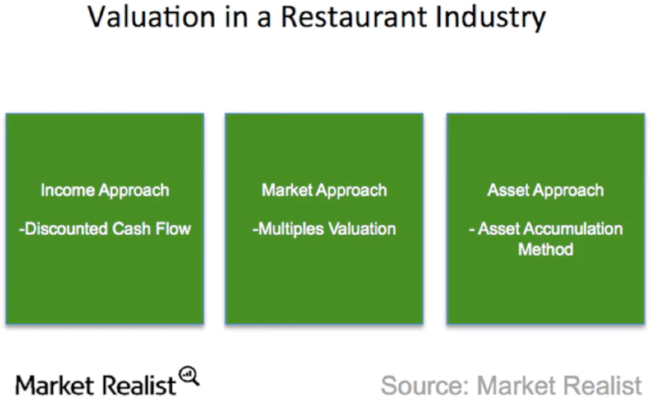M&A Blog #22 – valuation (less known valuation methods)
Thus far, we have covered four popular valuation methods in M&A (DCF, Comparable Company, Precedent Transaction, and LBO) and one less known one that is making its way out of the academic realm into the business world (Dividend Discount Method, DDM). We have also discussed how scenario and sensitivity analyses can be applied to the different methods. In this post, to wrap up the valuation discussions, I’d like to walk us through some of the other less known valuation methods. It is not that they less important, it is just that they are currently less well known than the others we have covered to-date.
The 1st one for today is the Tangible Book Value (TBV) method. It bases the enterprise value calculation on the balance sheet equity and deduct any intangible assets (goodwill, customer lists, etc.). TBV is a method often used to establish a low-level valuation for an on-going entity as most companies typically trade for multiples of book value (4Xs TBV or more). TBV is calculated as follow:
TBV = total assets - total liabilities - goodwill.
The advantage of this approach lies on its simplicity. The disadvantage is its narrowness in meaningful usage: it is only meaningful when used on businesses where tangible assets constitute the bulk of the enterprise value (such as an auto parts wholesaler / retailer) or when the assets are primarily cash or liquid assets (such as banks and financial service firms). Other than these two types of businesses, TBV should only be used as a complementary method to other valuation methods.
The 2nd valuation method for today is the Liquidation Value method. It bases the enterprise value calculation on an orderly liquidation basis over the next 6-12 months. Each asset class is revalued based on its sale in a 60-90 day sales process. Given the accelerated timeframe, many of the asset may be less valuable than their GAAP values. In addition, liquidation of this kind typically requires a broker with associated costs. Equity value is determined by deducting par-value liabilities from reduced-value assets. The following are common rules of thumb for revaluing the assets:
Receivables: at 80-90% of book value.
Inventories: at 50-80% of book value. Further:
Work-in-process (WIP) has little / no value.
Raw materials, inputs, and commodities are valued close to market’s.
Finished products are deeply discounted.
Equipment: varies depending on the market, appraisal required.
Land: at book value or higher, appraisal required.
Prepaid Assets: at 50% of book value.
The sum of these assets values minus the liabilities make the company’s liquidation value. This is the value of a company as a liquidated asset and is typically used as a floor valuation at which the company would trade. The advantages to this method are its simplicity and its appropriateness in bankruptcy cases (where companies are distressed and have to be liquidated). The disadvantage is its limited use and downright unsuitability when valuing a company with limited hard assets (such as a service company) where liquidation value may be negative. A sample of a liquidation value analysis can be found here.
The 3rd valuation method for today is the Replacement Value method. It bases the enterprise value calculation on each of the target’s assets in terms of replacing those assets individually. This is a useful method for a company evaluating a strategic acquisition. All of the target’s operating assets are assigned a value based on what it would cost to replace them. The total asset value is treated as the enterprise value. A company using this approach can think of the acquisition price as the cost of acquiring the assets directly. The advantages of this method lie on its simplicity and its suitability when acquiring a target for the target’s products (to expand product offering or pivot to a new business). The disadvantages of this method are its narrowness (this method doesn’t work when valuing high-margin businesses where assets are primarily intangible) and its high risk of sub-par returns.
The final valuation method for today is the various industry-specific valuation methods. Different industries have valuation methods that more closely track the industry sector:
Distributors: thanks to protected markets, stable demand, and limited growth - is often valued based on multiples of product unit sold. Examples: beer and beverage distributors.
Leasing companies: thanks to directly leasing and originating leases for other leasing companies - is often valued based on a combination of two methods. The direct lease business is valued based on cash flow, cost of capital, and residual value. The lease origination business is valued at a multiple of upfront fees less costs. Examples: equipment leasing companies.
Subscription companies: is often valued based on value per subscriber. Examples: cable companies, alarm monitoring companies, newspaper companies.
So, to re-cap, we have discussed four less known valuation methods in this post: Tangible Book Value, Liquidation Value, Replacement Value, and industry-specific approaches. As I stated at the beginning of this valuation series, there is no one “true” or “correct” value. So many factors influence the value of a company (financial performance, growth prospects, perfomance of peer companies, past transactions, the use of debt, the payment of dividends, the context of the transaction, and more). The valuation professionals going into these quantitative exercises may not be able to account for every variables, but they should attempt to do so to the best of their abilities. This post wraps up our valuation discussion. Thank you for keeping up with these very dry discussions. Next up in our musings is a livelier discussion of due diligence.

